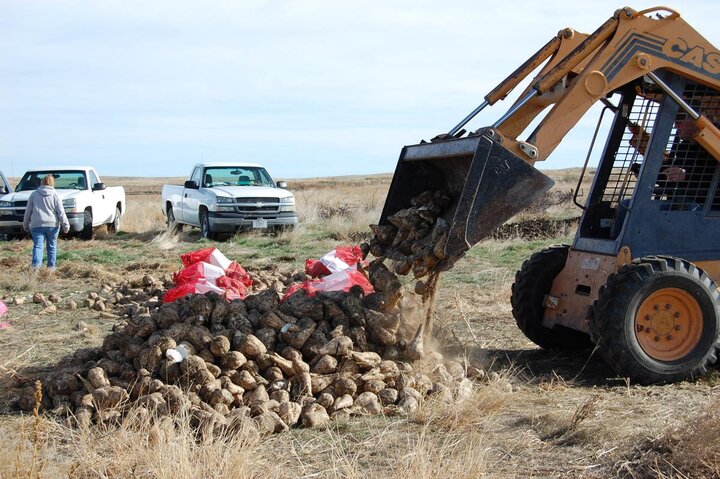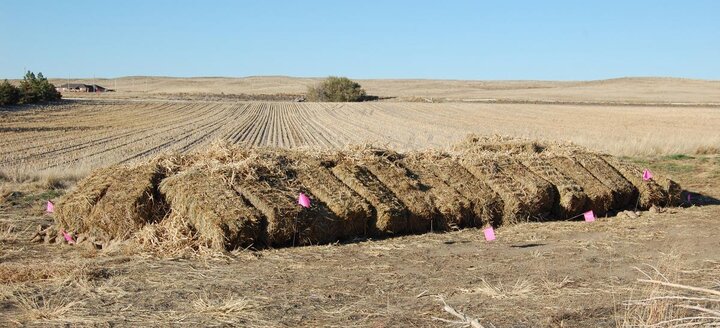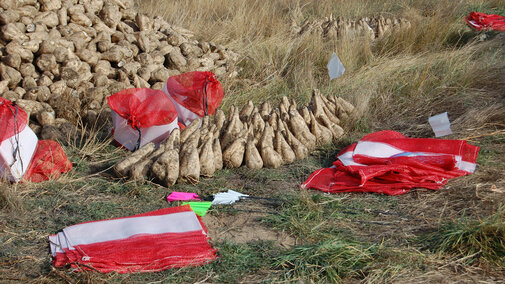Four post-harvest sugar beet fungicide treatments are being evaluated as part of a new research study underway at the University of Nebraska Panhandle Research and Extension Center in Scottsbluff. The study, which is looking at whether fungicide treatments can improve winter storability of beets, is being conducted with support from Syngenta and Western Sugar Cooperative.
The project consists of four fungicidal treatments that were applied to topped, harvested roots in mid-October (Figure 1). After the chemical products dried, the beets were loaded into onion bags and placed on a bed of sugar beet roots on the ground. More beets were piled on top, burying the onion bags within the pile (Figure 2). We then added insulating hay bales to the pile (Figure 3) to try to mimic conditions that the crop is currently undergoing at the factories while waiting to be processed. The bags were used so we could more easily retrieve the sugar beets from the center of the pile for analysis.
The concept is to test the degree of root rot, if any, and determine sugar concentrations after being stored in the piles. Samples will be removed in mid-December and late January 2017 for analysis. Western Sugar has graciously agreed to help provide facilities, opening their tare lab to allow us to test the roots after being exposed to the various fungicidal treatments.
This 2016 study is using clean roots from a field assumed to be disease free (no root rot symptoms) when placed in storage. Future studies should also attempt to treat roots affected by root rotting pathogens, such as Rhizoctonia solani prior to placing in storage. This would help to evaluate the efficacy of these products for their ability to limit spread of the disease within piles from diseased roots to healthy adjacent roots.



